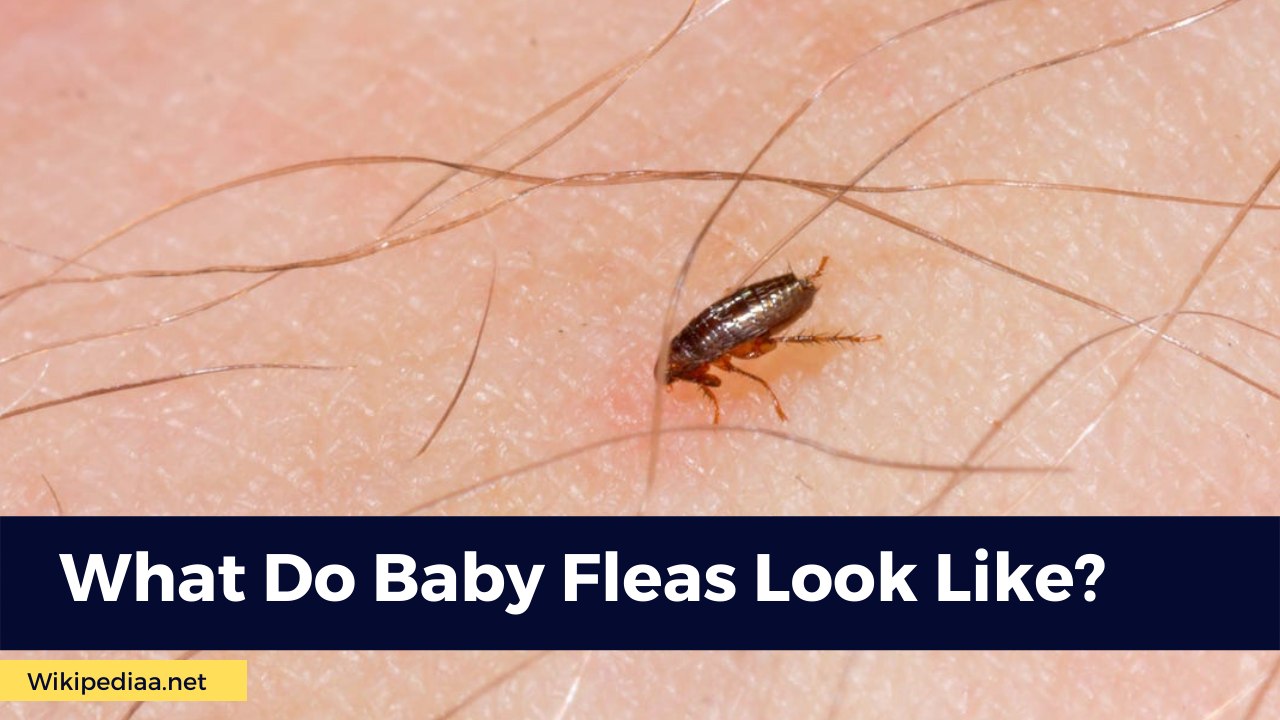What do baby fleas look like? Baby fleas are the pre-adult stages (eggs, larva and pupal stages), and they all look different. Flea eggs are tiny and oval-shaped and are off-white or yellow. The larvae have a shiny, wrinkled appearance. They look like small earthworms that march about. Finally, flea bug cocoons will appear as foamy masses with chewed up bits of debris inside.

Stages of baby fleas:
Here are the development stages of baby fleas:
1-Flea Eggs
At 0.5 millimetres in length, flea eggs (or “eggs”) are rather small and can be extremely difficult to detect, particularly so if they happen to get trapped within carpeting or upholstery.
The eggs themselves will be “off-white in colour” and look like a purse or small pocket. They will also feel “soft”, like a glove or a sleeve, as you touch it. If it were to change colour, it would turn yellowish in hue.
Female fleas will lay about 27 eggs each day. Their eggs are smooth and dry; you can find them on cats’ or dogs’ bedding. You can’t see the flea eggs with your naked eyes.
2.Flea Larvae
Flea eggs will hatch within two weeks. Flea larvae measure about 3 mm – 5.2 in body length. Baby fleas are white worm-like creatures with tiny bristles and usually last anywhere from 4-18 days. The flea larvae will have three instars or moults at this development stage. However, in their 3rd instars, the flea larvae make cocoons before pupating.
Flea larvae are reddish-brown, and they dig themselves into your pet’s bedding to feed on organic matter and poo. However, they are very light sensitive and will move away from the light; if you move them or the bedding, they’ll quickly lose interest in these resting places.
They actively hunt for new areas the host pet has been to; this includes sleeping places like a dog’s favourite chair. The fleas drop eggs at these locations as well – so it is vital for pet owners to be aware of where their four-legged best friends sleep so that any bedding can be checked regularly for infestations.
3.Flea Pupae
Flea larvae make up the majority of the flea population in your home. That’s why you see so many of them on your floor, living near your pets. However, despite this numerical advantage, it is not always enough to allow a flea infestation to invade your home unopposed. The reason for this is that as our adult dogs or cats can sense an impending invasion, we can sense the presence of fleas long before we are bitten!
But it’s not possible to exterminate the flea pupae using pastes or sprays since their cocoon offers a protective cover. Thus, vacuum cleaning the fleas in your spaces thoroughly will have to be done to remove even eggs and adults.
How to Kill Baby Fleas

- Vacuuming and Steaming
From a great vacuum cleaner for fleas, you will be able to eliminate about 32 to 90% of the fleas’ eggs, flea dirt and baby fleas in your room or carpet.
The best way to use it is by first vacuuming your upholstered furniture or bedding and then washing everything from under the bed (including those hard-to-reach corners) as well as pet beds and linens.
Another effective method for eliminating baby fleas is steaming and mopping the area. Another good option is to kill them with heat from a dryer or washing machine if you have pets.
2-Diatomaceous Earth
Diatomaceous earth (DE) for fleas acts like a natural flea control option by making the surface of their bodies feel very uncomfortable, causing them to dehydrate, thereby killing them.
DE is a finely ground powder made from fossilized algae diatoms – its walls have very sharp silica edges, which will break the fleas’ hard exoskeleton.
Besides fracturing silica into powder form, diatomaceous earth will also repel snails and snakes.
3-Salt Kills Baby Fleas
If you would like to treat a flea infestation effectively, consider using pepper and salt. Sprinkle some salt onto your pet’s bedding, so the fleas die immediately when they land on it. Note that you will need pepper since fleas are immune to salt.
You can use sea salt or household tabletop salt to kill fleas in your carpet or around your home. Just sprinkle the salt over a surface – let it sit there for one to two days, and the fleas are sure to die!
Salt has abrasive characteristics and will scratch the exoskeleton of baby fleas, rendering them inert so that you can kill them. By making the fluid levels within a single flea’s body drop to under 50%, the flea will inevitably pass away.
According to researchers, one limitation with this technique is that most fleas will live on their host for most of their adult lives. Given the right conditions, however – or upon the death of the host – they’ll move onto a new and more favourable host.











